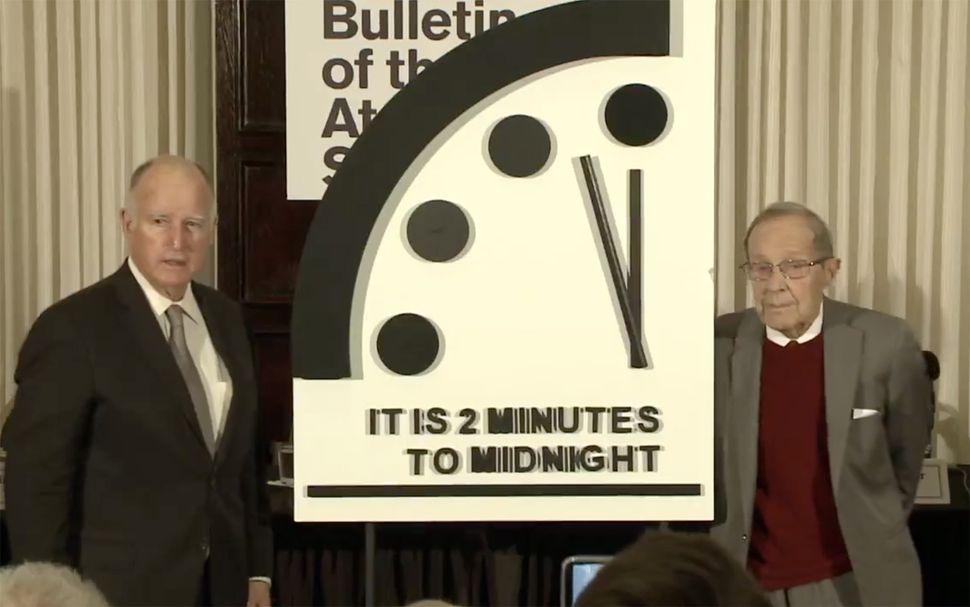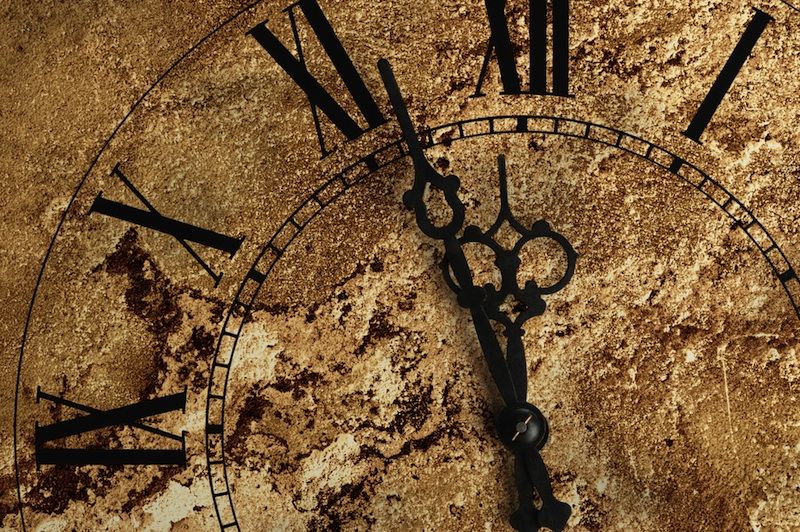

MARTIN: Now, we should mention that the clock has moved further from midnight. And that certainly is a cause for concern. And so in the lifetime of many of the people listening to you and me today, the clock has never been closer. And that really began the modern arms race. The last time the clock was closer than this was in 1953 when the then-Soviet Union exploded its huge hydrogen bomb for the first time.

MARTIN: When was the last time the Doomsday Clock was this close to midnight? And we're essentially violating that treaty. There is the fact that we haven't moved towards reduction of nuclear weapons and there, in fact, has been discussion of the possible increase in nuclear weapons, at a time when, in fact, we signed a treaty many years ago called the Non-Proliferation Treaty, which not only required other nations not to obtain nuclear weapons but the nuclear nations to try and disarm. When it comes to nuclear weapons, in the last year, there's been a lot of saber-rattling, in particular a lot of irresponsible statements from the new president of the United States, but equally vitriolic statements, in some sense, by the president of Russia as well. KRAUSS: Well, as usual, we look at many different factors from the likelihood of nuclear war, the tensions around the world through climate change and even looking at new emerging technologies. MARTIN: So what are the factors that went into deciding to move the clock this year? LAWRENCE KRAUSS: It's great to be with you virtually. And he is chairman of the board of the Bulletin of Atomic Scientists, which decides the Doomsday Clock. He's a prolific science writer, who often weighs in on public policy issues. He's a theoretical physicist at Arizona State University.

Here to talk about that decision and all that goes into it is Lawrence Krauss. But this week, the clock moved to two and a half minutes to midnight.

For the last two years, the clock has been set at three minutes to midnight. They determine how imminent the end of civilization appears to be with the end visualized as midnight on a clock. Every year since 1947, a board of scientists has considered the year's developments in politics, energy, weapons, diplomacy and climate science. But we're going to really lay into the doom part for the next few minutes because on Thursday, the world ticked half a step closer to Armageddon - that at least according to the Bulletin of the Atomic Scientists and the Doomsday Clock. Now, all eyes remained fixed on the Doomsday Clock in Hyde Park.We try to present the sweet with the bitter, which is another way of saying the news is not all doom and gloom. Moving incrementally forward in the 21st century, the clock was set at two and a half minutes in 2017, then forward to two minutes before midnight in January 2018, and left unchanged until 2020, when it was moved 30 seconds forward. In 1991, the Doomsday Clock was reset at 17 minutes before midnight - the furthest back it has ever been set - due largely to the signing of the Strategic Arms Reduction Treaty between the United States and Soviet Union, putting an end to the Cold War through their agreement to reduce and limit strategic offensive arms. Even during the Cuban Missile Crisis, when nuclear tensions escalated between the United States and the Soviet Union, the Doomsday Clock remained set at seven minutes to midnight. The closest the minute hand came was in 1953, when the clock was moved to two minutes before midnight when both the United States and Soviet Union tested hydrogen bombs. Over the years, the Doomsday Clock has been moved forward and backward at least 24 times.


 0 kommentar(er)
0 kommentar(er)
